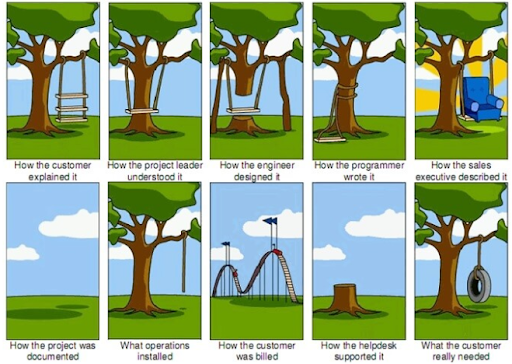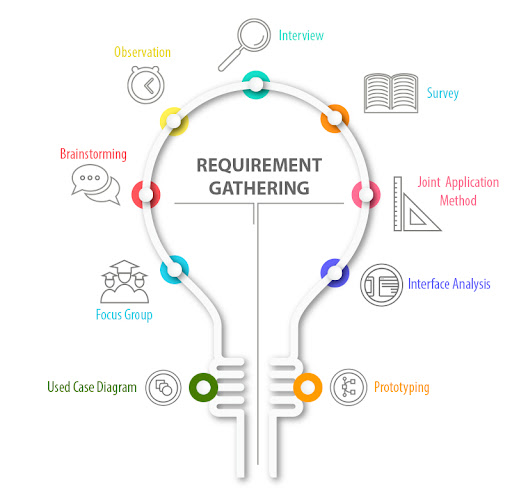Requirement Gathering
Requirement gathering is a process of understanding what needs to be developed and the reason behind developing the product or services. Basically, as a business analyst, your role is to understand the pain point of the client and the problems they are facing in the current environment. Thus, understanding why they want to build a product or a service in place. Defining the project requirement’s scope and goals early on during the project initiation can help you solve the risk factors and issues much more intuitively than without proper understanding.
Business analysts, system analysts, product owners, and project managers are mainly responsible for meeting with stakeholders and clients and jotting down the project’s requirements, goals, and scope.

Stages of Requirement Gathering
Gathering business requirements is the critical step for the project. A business analyst needs to thoroughly understand the business needs and align them with business objectives to bridge the gap between business and technical requirements. Also, a responsible BA has to communicate the needs to the stakeholders and the development team.
Following are the stages of requirement gathering:
- Identify the right stakeholders
- Define the Project: Understand the project goals and scope
- Elicit the requirements from the stakeholders
- Document the requirements
- Confirm the Requirements with the client and stakeholders to ensure transparency
- Prioritize the needs based on discussion with the clients
Identify the right Stakeholders
Project stakeholders are those who are impacted by the project outcomes. These may include:
- Senior Managers
- End-Users
- Marketing Department
- Subject Matter Experts
- Engineering Team
- Product Owners
- Suppliers
- Other partners and associations

Requirement Elicitation
Requirement elicitation is a process of gathering the correct information from the internal and external stakeholders. Requirement elicitation can be performed in several ways:
- Surveys
- Questionnaires
- Interviews
- One-on-one meetings
- User stories
- Brainstorming sessions
- Process diagramming
- Follow-Up Meetings
- Workshops etc